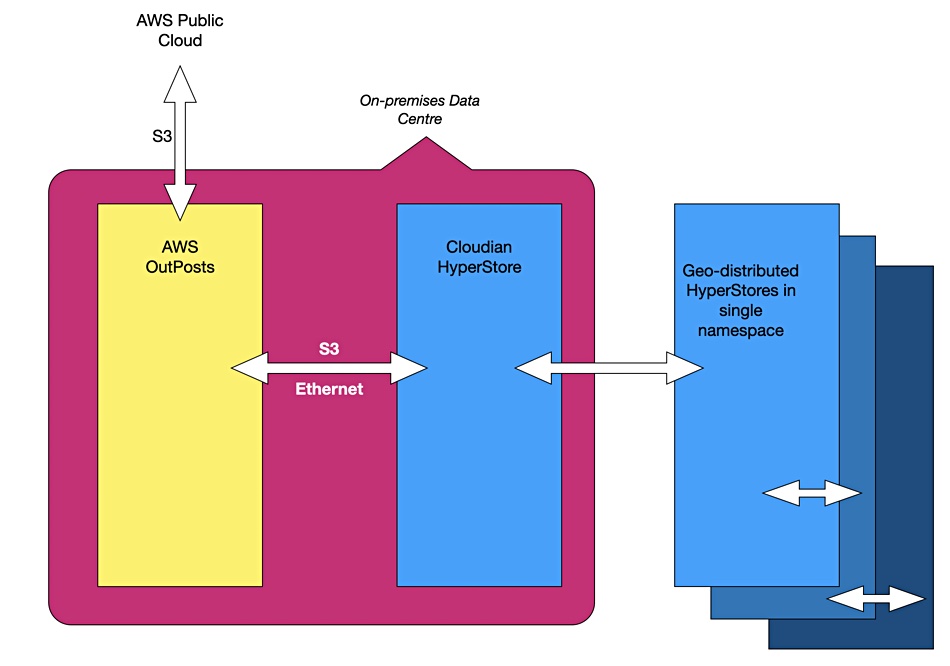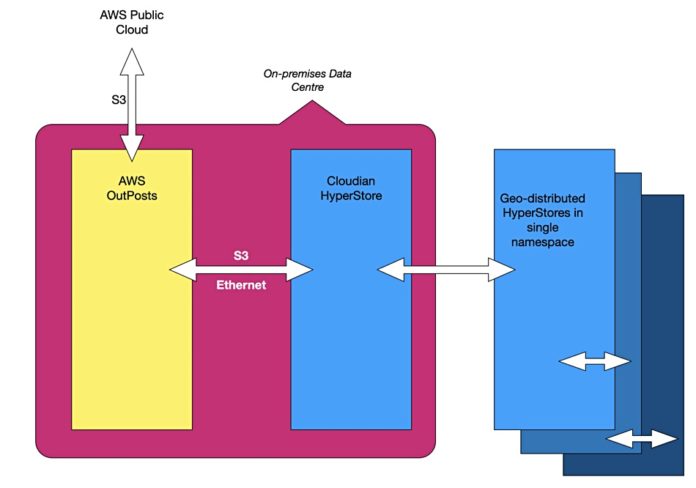Cloudian’s HyperStore system been validated by Amazon to run with its on-premises AWS Outposts systems, providing fast and local object storage.
Outposts is Amazon’s fully managed, on-premises version of its AWS cloud, deployed in a converged, rack-level system. HyperStore has achieved an AWS Outposts Ready designation, meaning AWS has fully tested its product running with Outposts.
Joshua Burgin, AWS’ general manager for AWS Outposts, said: “With Cloudian’s HyperStore solution … we’re expanding the workloads AWS Outposts serves by enabling on-prem, S3-compatible storage that meets data residency and latency requirements.”
It’s worth noting that Outposts itself already includes local S3 object storage support; it was added in October 2020, on top of the original support for S3 in the Amazon cloud. Why is Cloudian’s box needed?
Outposts’ local S3 capacity is size limited: users can only add 48TB or 96TB of S3 storage capacity to each rack and create up to 100 buckets. It’s effectively a local cache for S3 in the AWS cloud with the AWS DataSync service moving data to and from AWS cloud regions.

Cloudian’s HyperStore has a near-unlimited capacity, up beyond petabytes to exabytes. Applications that run in Outposts and use S3 storage execute exactly as before, using the same S3 semantics. They now access S3 objects in the HyperStore namespace and have local access latency, as before, and can meet country or region-specific data sovereignty rules.
Cloudian CMO Jon Toor told B&F in a briefing: “AWS can do more with Outposts by using HyperStore on-premises. … There is no need to move petabytes of data to the cloud. … Now AWS outposts can be used for on-premises use cases they couldn’t satisfy before.”
Toor thinks this is good for financial services, mentioning credit card transactions, and also healthcare, because of data locality rules. Other use cases exist in the media and entertainment, telecommunications and government areas.
He said: “Customers can now deploy a whole slew of services on-premises and have an easy on-ramp to the cloud.” In effect, “Cloud and on-premises are two sides of the same coin.”








